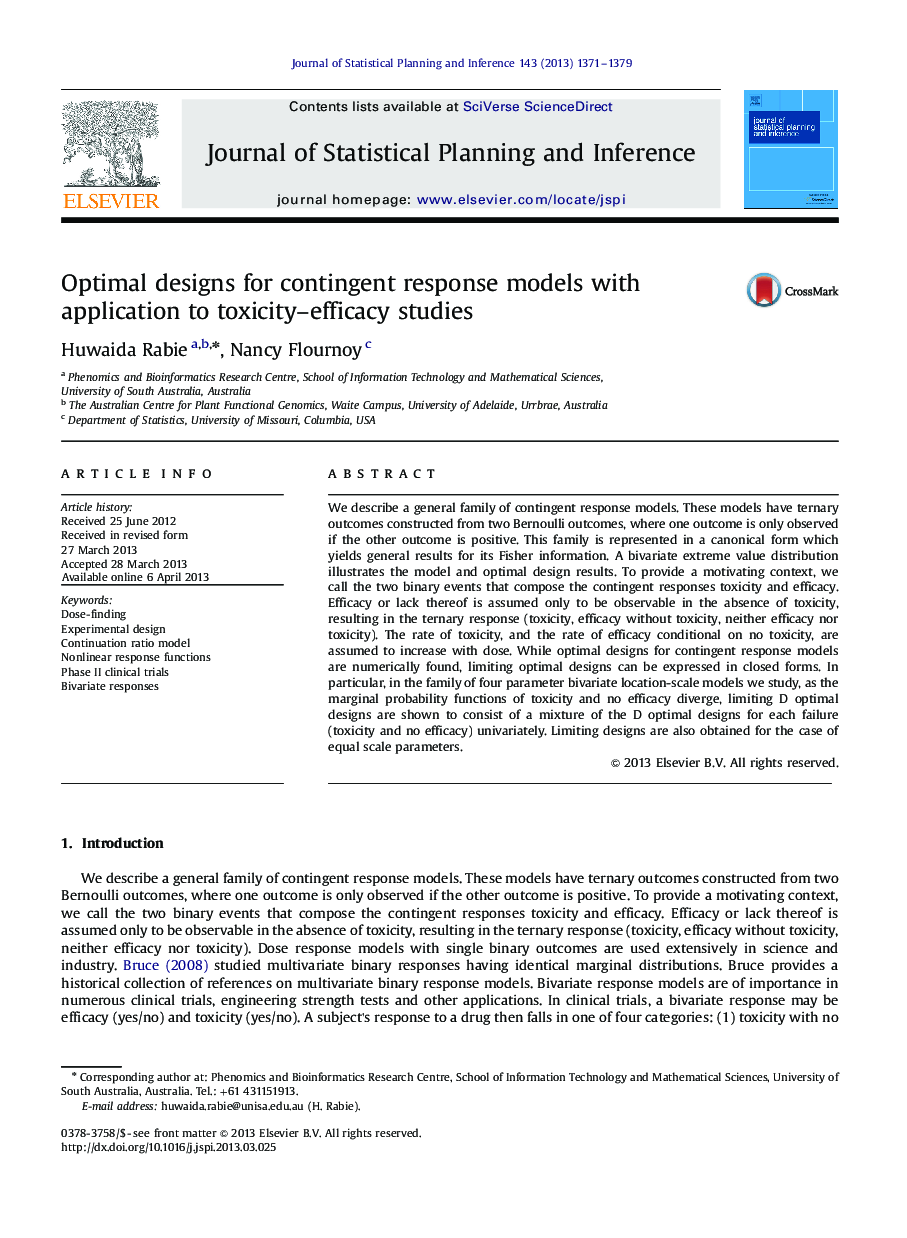| Article ID | Journal | Published Year | Pages | File Type |
|---|---|---|---|---|
| 1147470 | Journal of Statistical Planning and Inference | 2013 | 9 Pages |
Abstract
We describe a general family of contingent response models. These models have ternary outcomes constructed from two Bernoulli outcomes, where one outcome is only observed if the other outcome is positive. This family is represented in a canonical form which yields general results for its Fisher information. A bivariate extreme value distribution illustrates the model and optimal design results. To provide a motivating context, we call the two binary events that compose the contingent responses toxicity and efficacy. Efficacy or lack thereof is assumed only to be observable in the absence of toxicity, resulting in the ternary response (toxicity, efficacy without toxicity, neither efficacy nor toxicity). The rate of toxicity, and the rate of efficacy conditional on no toxicity, are assumed to increase with dose. While optimal designs for contingent response models are numerically found, limiting optimal designs can be expressed in closed forms. In particular, in the family of four parameter bivariate location-scale models we study, as the marginal probability functions of toxicity and no efficacy diverge, limiting D optimal designs are shown to consist of a mixture of the D optimal designs for each failure (toxicity and no efficacy) univariately. Limiting designs are also obtained for the case of equal scale parameters.
Related Topics
Physical Sciences and Engineering
Mathematics
Applied Mathematics
Authors
Huwaida Rabie, Nancy Flournoy,
